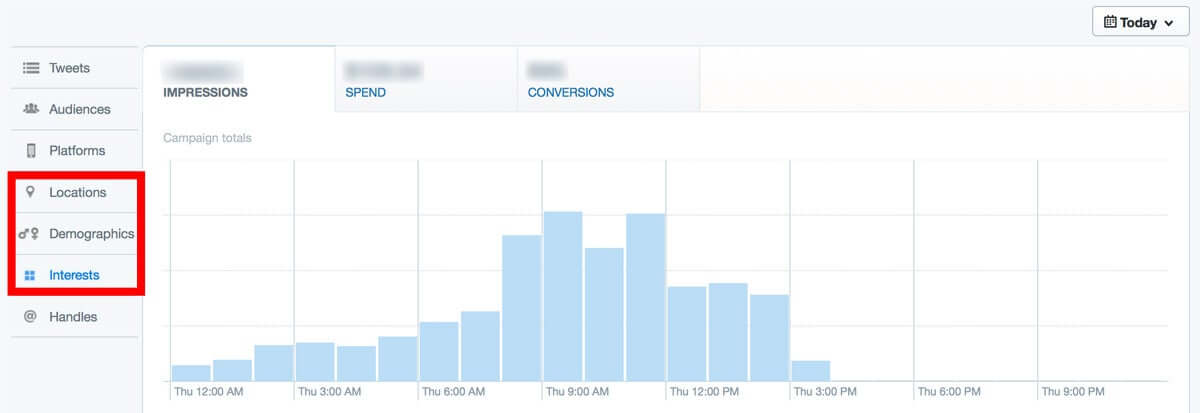Are You Focused on the Right PPC Metrics?
by Aden Andrus • November 6, 2019
With the new year right around the corner, most businesses are taking a hard look at their PPC metrics, trying to put together a good budget for next year and figure out what’s working and what isn’t.
With all of this focus on data, however, there’s an important question that you need to ask yourself: are you even focused on the right PPC metrics?
Unfortunately, for many businesses, the answer to that question is a firm “no”. Many marketers and business owners do pay attention to their PPC metrics—the problem is, they’re focused on the wrong things.
And, sadly, when you’re focused on the wrong things, 97% of inbound marketing campaigns fail.
Now, that statistic might seem a bit arbitrary, but it’s actually based on hard data from Hubspot’s State of Inbound report. They don’t come right out and say it, but if you reverse-engineer the math behind their numbers, it quickly becomes clear that if you want to succeed at online marketing—you need to be looking at the right data.
So, if everyone is looking at the wrong data and it’s killing their campaign performance, what PPC metrics should you be looking at? Well, let’s take a look at several different types of PPC metrics and see what they tell you.
Why the Right PPC Metrics Matter
Now, if you’re a good marketer, you probably pay attention to the performance of your PPC marketing campaigns. That’s a good step in the right direction, but if you’re not looking at the right data, it’s not doing you much good.
Simply having Google Analytics on your site or checking in on your cost-per-click just isn’t enough. You need to know what your data is telling you and how to use that information to make relevant business decisions.
There are a lot of different types of PPC metrics out there, but when you get right down to it, there are basically 3 different types of data you can use to evaluate your campaigns: traffic data, conversion data and sales data.
Traffic Data
Traffic-focused PPC metrics tell you a lot about how effective your marketing is at catching the eye (and interest) of your target audience. For example, if you’re running ads on Twitter, you can use PPC metrics like clickthrough-rate (CTR) or cost-per-click (CPC) to determine which ads your audience responds best to.
To be honest, most PPC advertising platforms give you a ton of traffic-related data: keyword performance, device segmentation, impression share, etc. All of these metrics help you understand your target audience and what sorts of marketing messages they resonate with.
Going back to our Twitter Ads example, if you’re curious about who’s responding to your ads, you can easily use Twitter Ad’s Locations, Demographics and Interests sections to get at that information.

In addition, you can find lots of relevant information on your website analytics platform. If you have something like Google Analytics set up correctly, you can easily see where your traffic came from, who they are (interests, demographics, etc) and how they engaged with your site.
What Your Traffic Data Tells You
The question is, what does all of this traffic data actually tell you? Well, as we discussed above, it can actually tell you quite a bit about how certain aspects of your marketing are working.
To put this in perspective, let’s imagine that you’re in charge of marketing for a law firm. A new client spends about $3,500 and it costs about $1,750 to meet their needs.
Here’s what some of the traffic data for your PPC campaigns currently looks like:

Which campaign is performing the best? Hands down, it’s campaign #3. Great CTR, low CPC and tons of clicks. What more could you ask for?
In comparison, campaign #4 looks like a complete waste of money. The CPC alone is almost 10x higher than campaign #3’s CPC. If you put the $12,000 you’re spending on campaign #4 into campaign #3, you’d get an extra 6,000 clicks!
But does your law firm make money off of clicks? No, it doesn’t.
To make money, your firm needs new leads, and while this traffic data tells you how people are responding to your ads, it doesn’t actually tell you whether or not those clicks are turning into leads.
Conversion Data
If you want to see whether or not you’re actually driving potential clients and customers to your website, you have to look at your conversion data.
In a nutshell, conversion data helps you answer two very different questions about your PPC campaigns:
1. Does your site work for your potential customers?
If a good percentage of the traffic to your website or landing page is converting (making a purchase, filling out your form, etc), then your site must be a good match for their needs and expectations.
But, if only a small percentage of your traffic is converting, there’s a good chance that something about your site needs to be adjusted. You might have to much content, distracting elements, an intimidatingly long form, or any number of other obstacles that are keeping people from converting.
To fix these problems, you may need to do a little conversion rate optimization (CRO). Essentially, you’ll need to test different tweaks on your website and see how it affects your conversion rate. It’ll take some work, but if you can better match your site to your traffic’s needs and expectations, you’ll get more conversions.
2. Do you even have the right traffic?
Conversion rate optimization only works, though, if you’re actually driving the right traffic to your website. It’s easy to assume that because people clicked on your PPC ads, they must be potential customers, but that’s not always true. Many businesses are driving tons of the wrong people to their website…and then wondering why they aren’t getting the conversions they need.
To be honest, if you feel like your site is basically sound and your traffic isn’t converting, the first place to look is at your actual traffic. After all, the wrong traffic will never convert, no matter how optimized your website is.
Are certain campaigns converting worse than others? What sort of messaging and targeting are they using? Are you getting clicks from the right demographic? Taking a hard look at your conversion data can teach you a lot about the traffic your ads are driving.
What Your Conversion Data Tells You
Let’s take another look at our law firm example, but this time we’ll add our conversion data into the table:

As you can see above, campaign #3 is still the overall winner. Even though it’s conversion rate (CR) isn’t great, it drives so many clicks at such a low cost-per-click that it still has the lowest cost-per-lead (CPL).
For campaign #4, however, things only get worse. In addition to that terrible cost-per-click that we mentioned earlier, it’s also tied with campaign #3 for worst conversion rate. As a result, the CPL for campaign #4 is—not surprisingly—still almost 10x higher than campaign #3’s CPL.
Here again, it sure seems like our hypothetical law firm could get much better results if they put campaign#3’s budget into campaign #4. But, while conversions like leads are great, you still don’t make money off of conversions. To get at the profitability of these campaigns, we need sales data.
Sales Data
When you get right down to it, the whole point of PPC advertising is to drive profitable sales. If your campaigns aren’t producing profitable results, they’re quite literally a waste of money.
And, as a result, sales data is the holy grail of PPC metrics.
While traffic data and conversion data tell you a lot about your audience and how they respond to your messaging, they don’t answer the fundamental question of PPC advertising: are we getting sales?
To answer that question, you need to track the performance of your ads all the way down to the sales they are producing. For ecommerce businesses, this is relatively easy. For businesses like our hypothetical law firm, this can be a bit tricky, but with a good CRM like Salesforce, Zoho or Nimble, it’s certainly doable.
So is it worth it to track your PPC metrics through to actual sales data? Let’s see what happens if we add sales data to our law firm’s campaigns:

Looking at the table above, which campaign would you invest in? Campaign #3, which was our traffic and conversion data rockstar? Or campaign #4, which has nearly double the return on ad spend (ROAS) of the next best campaign?
As it turns out, while campaign #4 doesn’t have a great clickthrough rate or conversion rate, it has the best sale rate (SR) of the bunch. In fact, its sale rate is so much better than campaign #3 that its cost-per-sale (CPS) is almost one-half the sale rate of campaign #3!
Now, it’s not immediately clear why campaign #4’s sale rate is so much better, but if this law firm had based their decisions on the traffic and conversion data, they probably would have cut their losses and shut down campaign #4…and gotten rid of their most profitable campaign.
If they’d pushed that money into campaign #3, they would have gotten a ton of clicks and leads, but at a 92% ROAS, they would have been losing money on every sale.
All of this just goes to show how important your sales data is. The traffic and conversion data for campaign #4 indicates that there’s a lot of room for improvement, but in the end, if this firm hadn’t tracked things through to the actual sales data, they would have made the wrong decisions.
Does it take extra time and effort to track and measure your sales data? Yes, but your sales data is an incredibly important PPC metric that you must track. If you don’t, you will make the wrong decisions with your PPC marketing. The only question is, how much money will you waste on ineffective marketing?
Conclusion
So, is your business focused on the right PPC metrics? To make smart marketing decisions, you need to look at all of the data—not just the easy or obvious parts—and use it to identify what’s working (and what isn’t) in every part of your PPC account.
By the way, if you’d like some help evaluating your campaigns (or setting up effective analytics for your PPC campaigns), let us know here or in the comments. We’d love to help!
Which PPC metrics are the most important to your business? Do you agree with this analysis? How do you use PPC metrics to evaluate your campaigns? Leave your thoughts in the comments.





